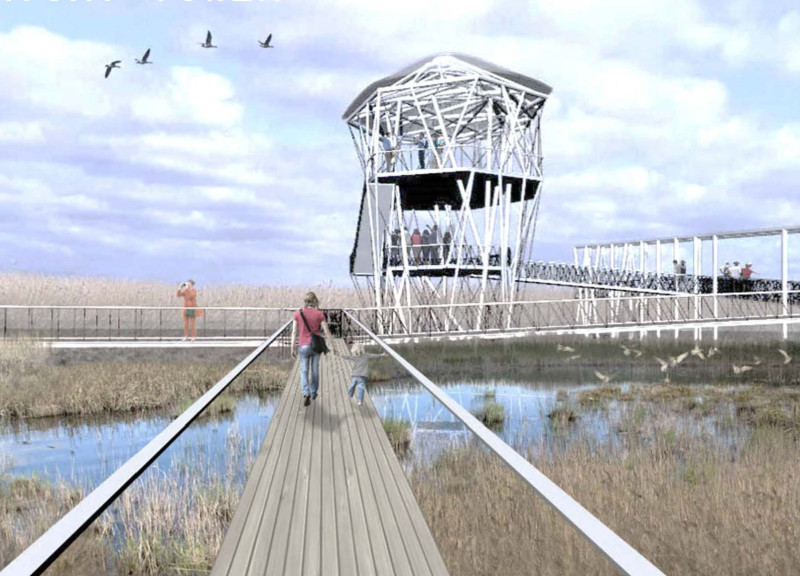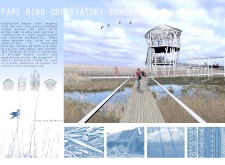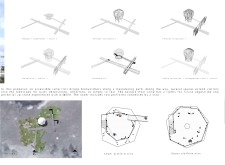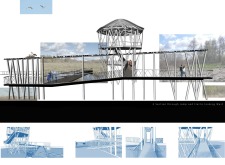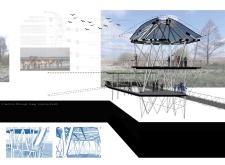5 key facts about this project
**Overview**
The Pape Bird Observatory Tower is situated in a serene wetland area of Latvia, characterized by diverse flora and abundant birdlife. The design intent is to create a space that promotes engagement with nature while serving as a resource for education and community engagement. The observatory is not only a platform for birdwatching but also an invitation for exploration and contemplation within its natural setting.
**Spatial Strategy and Design Layout**
The observatory features a series of interconnected elements that guide visitors through the wetlands. An accessible ramp winds through the landscape, facilitating quiet observation and reflection. This path culminates in two distinct observation platforms that offer elevated views of the wetlands, enhancing the visitor experience. The tower's design includes lower and upper platforms connected by a central stair, allowing for vertical movement while maintaining an elegant yet functional profile. The structure minimizes disruption to the ecosystem, employing raised platforms that support the existing vegetation and wildlife underneath.
**Materiality and Environmental Considerations**
Material selection is integral to both the aesthetic and functional aspects of the observatory. Wood is used for pathways and decking to create a warm, organic feel that integrates with the surroundings. In contrast, steel provides the structural framework, offering durability and a lightweight appearance that withstands the local climate. Glass elements allow natural light to permeate the interiors, facilitating a strong connection between indoor and outdoor environments. This choice of materials not only reinforces the architectural narrative but also considers sustainability and the environmental impact of the structure on its delicate wetland location.


